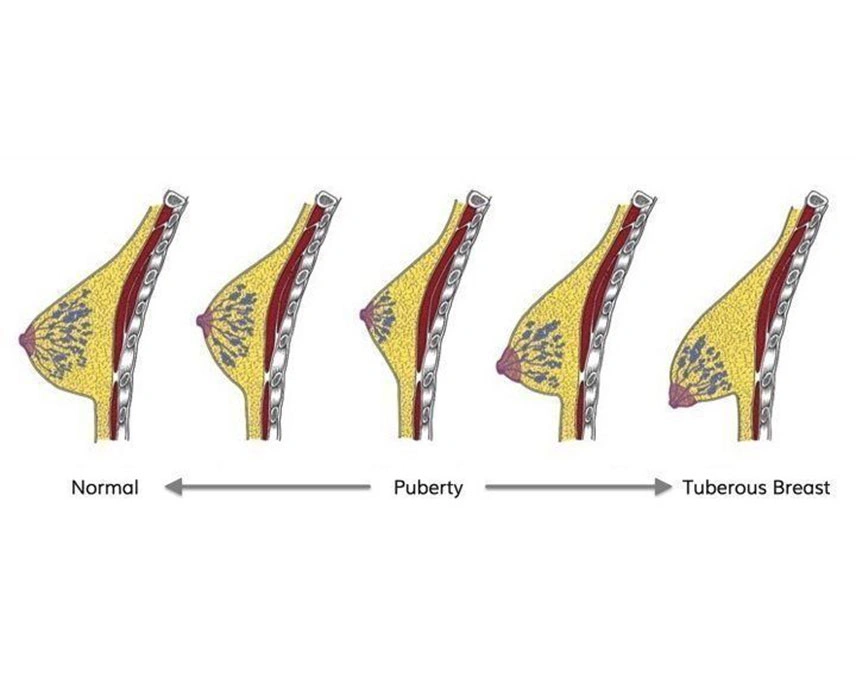Tuberous Breast Deformity

What can be done about tuberous breasts?
Plastic surgery can be done to correct TBD, but any procedure will likely involve more than a simple breast augmentation because of the breast tissue constriction. Simply inserting an implant into a tuberous breast will amplify its deformed appearance, not correct it. The constricted tissue must be either expanded or scored to round it out before a breast augmentation can be done, and a breast lift or reduction may also be required. For some patients this means multiple surgeries, but the end result are more normal looking breasts that women will not have to hide or be ashamed of.
The deformity is characterised by a constricted breast base and deficient horizontal and/or vertical development of the breast with or without herniation of the breast parenchyma towards the nipple-areola complex (NAC) and areolar enlargement.
This condition mainly due to genetic involving a disorder of collagen deposition.
Characteristics of tuberous breasts include: “enlarged, puffy areola, unusually wide spacing between the breasts, minimal breast tissue, sagging, higher than normal breast fold, and narrow base at the chest wall.”
It’s difficult to say. It’s estimated that between 1 and 5% of breast augmentations done are due to tuberous breast deformity, but many women suffer unhappily with this condition and never try to get any kind of treatment. Some of them become so ashamed of their breasts that they hide them from everyone.
Depending upon the severity of the condition, this deformity classified into four grades.
Type I deformity can be adequately treated by augmentation or reduction mammoplasty and Type II with spreading of breast tissue in addition. Severe cases (Type III/IV) required additional skin in the subareolar region by tissue expansion or flap procedure to achieve the desired breast shape and avoid a ‘second crease’ deformity.
More recently, there have been a number of publications exploring the role of fat grafting in correction of tuberous breast deformity. We believe that this could be a useful adjunct to conventional surgery. It would however not be possible to use this as the sole technique in patients with severe deformity without releasing the parenchymal constrictions and reducing NAC diameter
No, women with tuberous breasts cannot breastfeed their babies because their milk glands are too underdeveloped to produce milk
Having tuberous breast deformity negatively impacts their sense of self, making them feel worthless or less than desirable or womanly. It can have a bad effect on their romantic relationships as well.